Reading Time: 6 minutesMany fly fishing knots are interchangeable with conventional tackle, but some are very specific to fly equipment. The fly line itself is very unique because it doubles up as the weight used to cast with a fly rod, too. A leader is connected to the line which in turn reaches the fly.
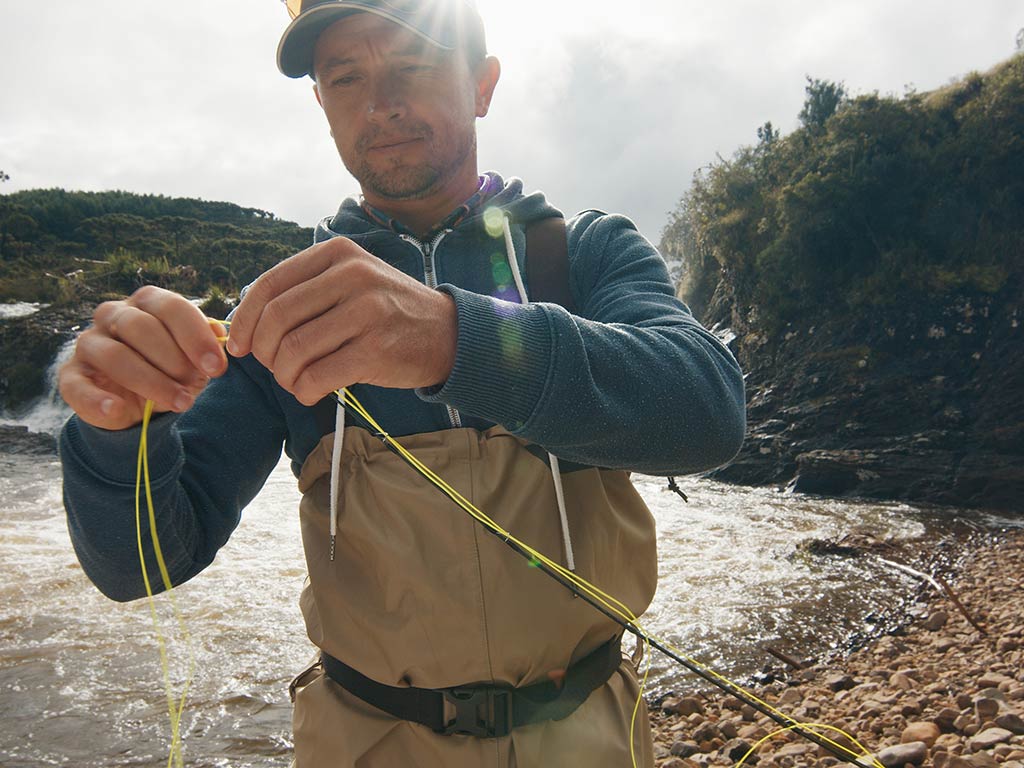
The only other crucial element is the backing that connects the fly line to the reel. The backing is typically made out of nylon or dacron, and it’s a safety net of extra line for fish that run out the entire fly line. It’s especially important for saltwater fishing and for strong species such as Salmon, Steelhead, and more.
What Makes Fly Fishing Knots Different
But enough about the basics, you’re here to learn about knots, in particular. While there’s plenty of crossover between knots for fishing styles, fly fishing knots are very specific to managing the connections between multiple types of lines. They also rarely use any hardware like swivels or integrated weights. Fly fishing knots are designed to maintain smooth, interrupted transitions between the lines.
Most of these knots are permanent and will last for the life of your fly line. The place where knots are tied almost always revolves around the leader and tippet systems. Adjusting length, line strength, and maintaining tapers on leaders is an important part of fly fishing. Here are a few must-know fly fishing knot tips:
Tie the Backing to Your Reel
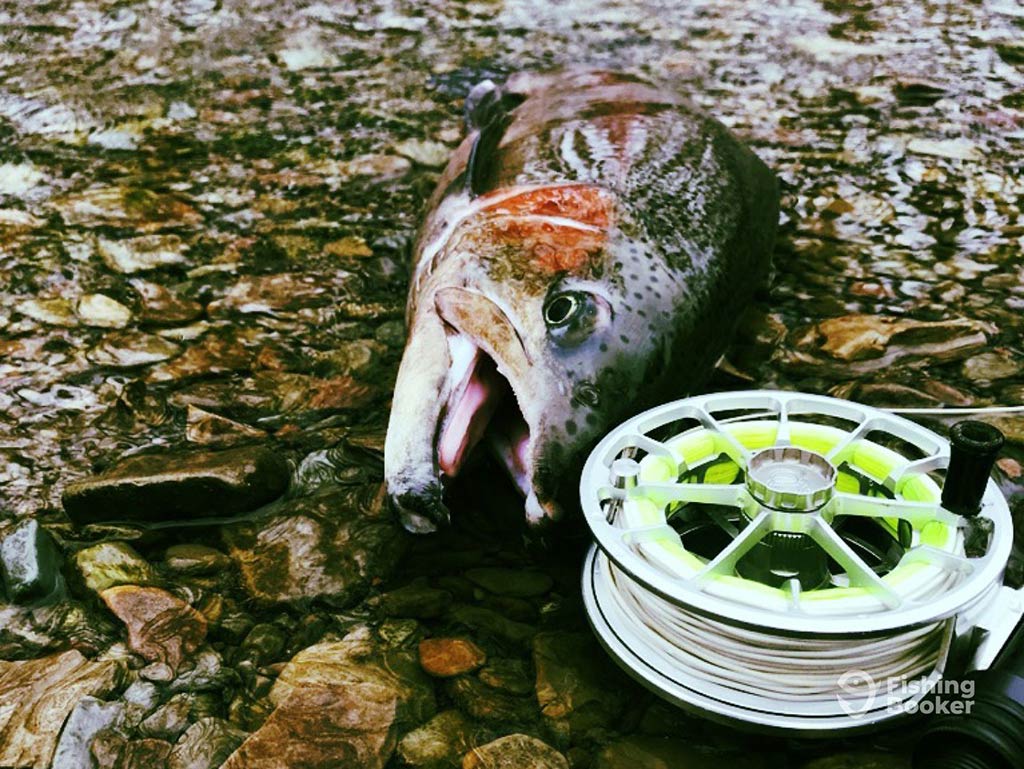
Some anglers use a uni knot and others prefer the Arbor knot for this connection. I like an Arbor knot because it lacks bulk and won’t foul when the last strands of backing peel off the reel. If a fish strips all of your backing, however, the odds of stopping it and recovering are not great. Regardless, the Arbor knot is fantastic and it’s super easy to learn.
Connect the Backing to the Fly Line
There are two common methods of completing this connection. The one you choose largely depends on the fly line you purchase. Some have a loop built into the line and others do not. For lines without a loop, use a nail knot to connect the backing and fly line. For those with a loop, tie a surgeon’s loop knot into the backing and make a loop-to-loop connection. You’ll need to make the loop very large so it can slip over the spool holding the fly line. The knot and loop will still lay flat on the reel.
Knots for Leader to Fly Line
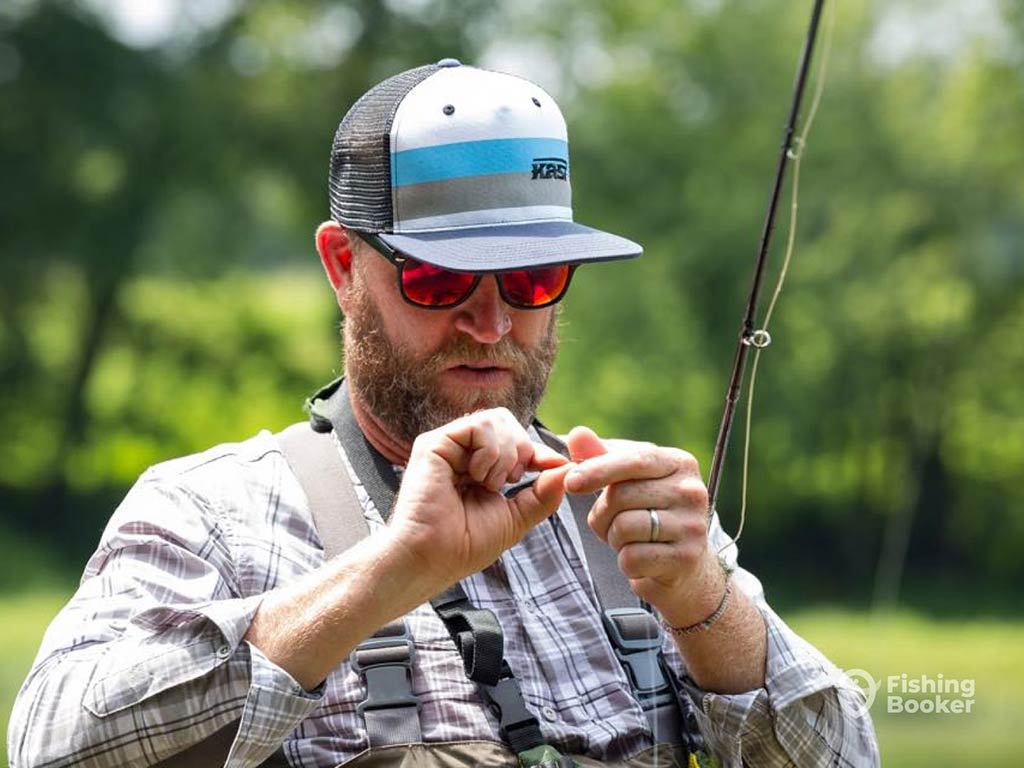
Photo courtesy of Eye On The Fly ExpeditionsThe knots for this segment are actually the same as the former. Most fly lines have a loop integrated into the end and many leaders come with a loop as well. The loop-to-loop connection is all you need in this case. If your leader doesn’t have a loop, tie a surgeon’s or perfection loop knot to form one. If the fly line has no loop, tie a nail knot to connect the leader to the fly line.
Leader, Tippet, and Hook Knots
The tippet is a section of monofilament or fluorocarbon that preserves the taper in your leader. A simple surgeon’s or blood knot is used to connect the two lines. Lastly, you need to tie on a fly - and numerous knot options are available for this last segment. An improved clinch knot is easy to learn and very strong for different leader sizes.
What are the best fly fishing knots?
This is a constant debate in the fly fishing community and the answer will differ greatly between saltwater and freshwater anglers. The knots a Musky angler uses will also vary from those of a Trout or Panfish angler. The following are great knots that can cover many fly fishing situations.
Arbor Knot
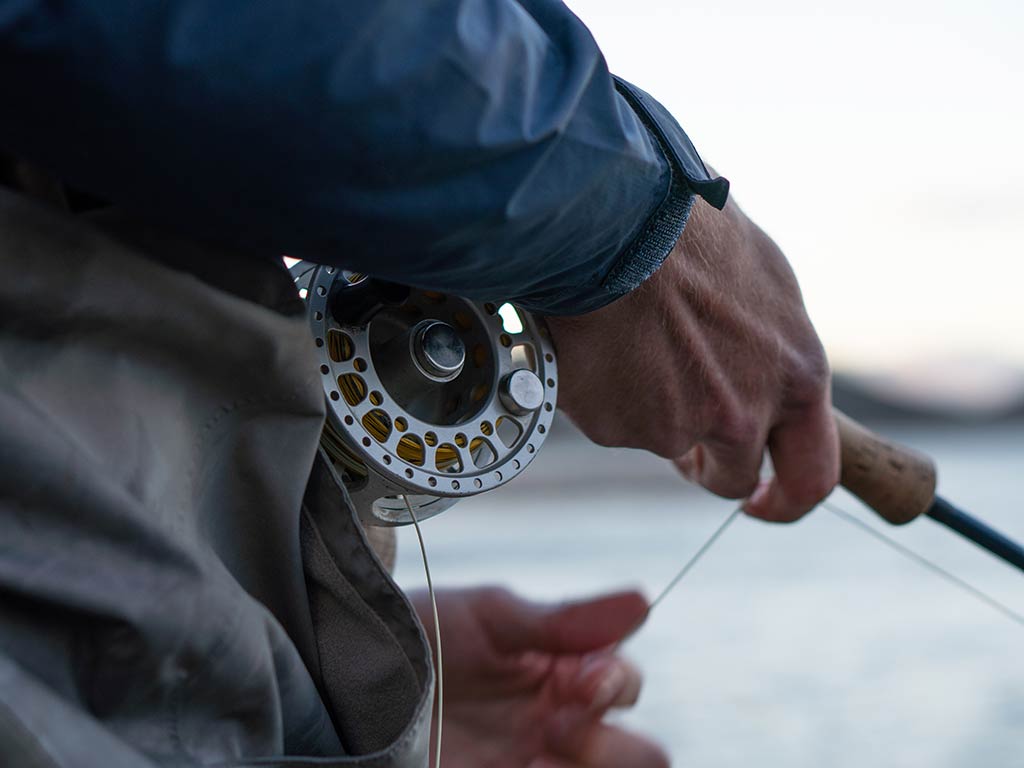
This works for all types of backing and will even work with braided or mono lines for conventional anglers. Here’s how you tie one:
- Wrap the tag end of your backing around the reel. Tie an overhand knot to act as a stopper at the very tip of this tag
- Wrap the tag end around the main stem, pointing downwards in an overhand knot fashion
- Wrap again, moving the tag end so it’s facing away from the reel to form a figure of eight. Slowly pull tight until the stopper knot cinches against the reel
Surgeon’s Loop
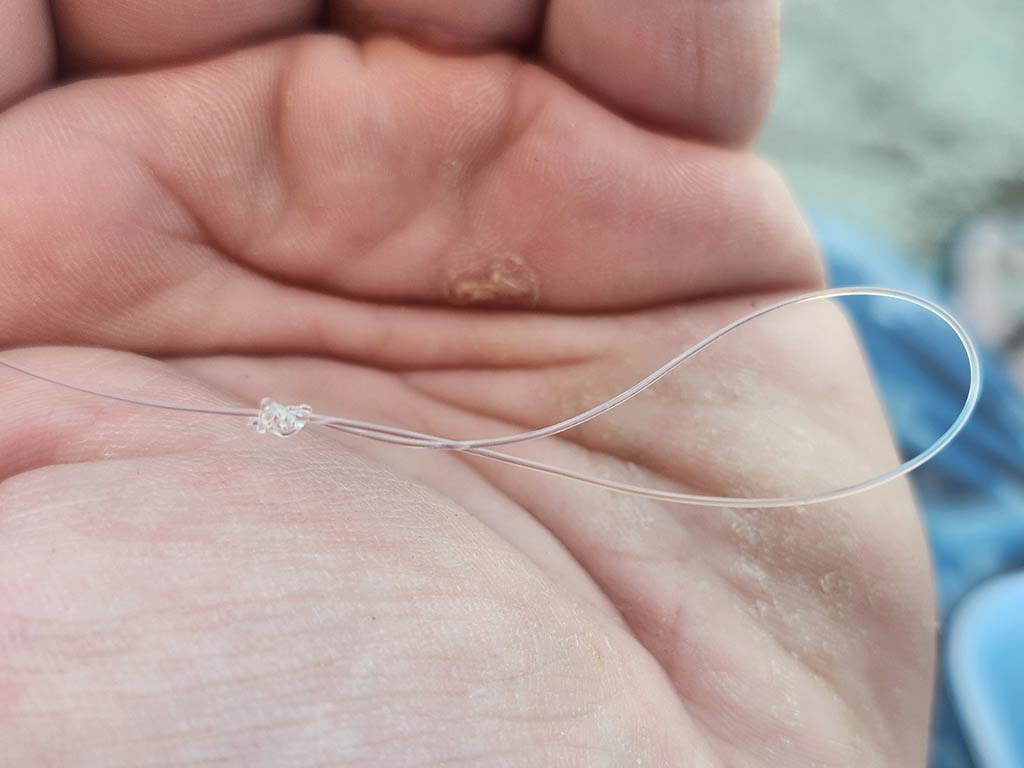
Photo courtesy of Zach LazzariAs mentioned above, a surgeon’s loop is great for connecting the backing and leader. A perfection loop is a good alternative but follow these steps and you’ll see that a surgeon’s loop is much simpler:
- Fold the line to form a loop and pinch the crossover ends together
- Use the loop to tie an overhand knot, then pass it through again for a double overhand
- Pull tight to secure the loop and clip the tag end
To connect the tippet, you only have to overlap the two ends and tie a double (or triple) overhand knot. Pull tight and clip the ends to complete the knot. This works best when the tippet and leader are close in diameter.
Loop to Loop Connection
Anytime you have two loops, they can form a very strong connection. To complete this, pass one loop through the other and pull the line through until the tag end has passed through the loop. Pull tight and the loops will snug against each other.
Nail Knot
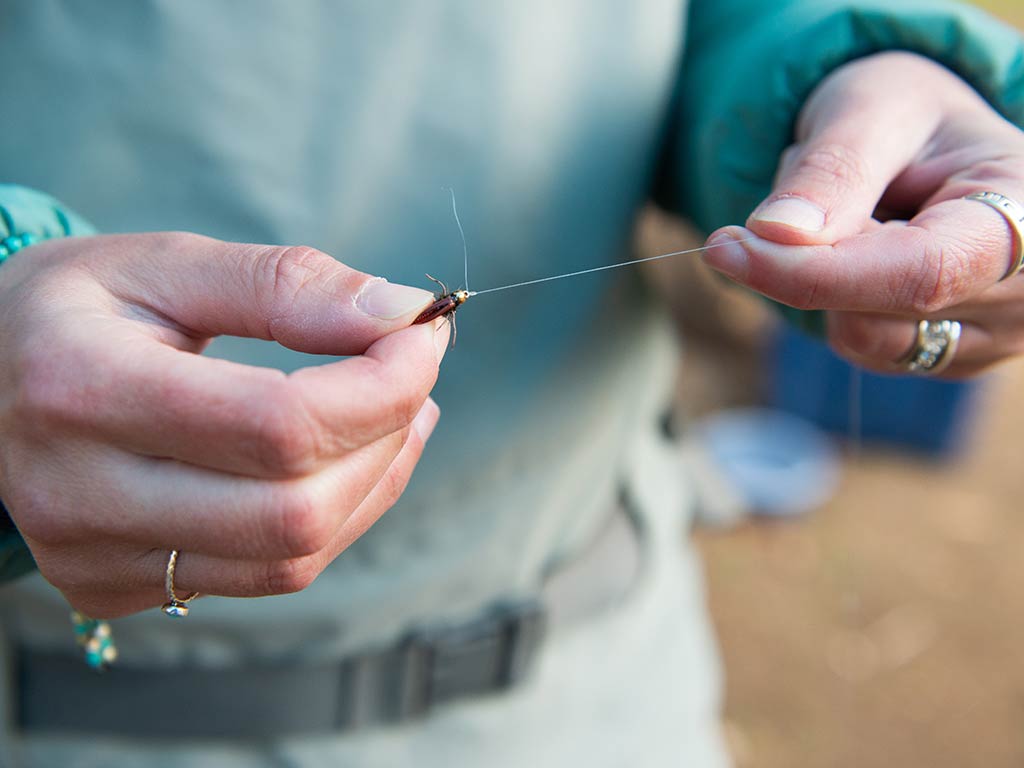
This knot is more difficult and requires some practice. Several tools are available to assist with the knot and they make it much quicker and more accurate. By using a tool, you can tie a nail knot by:
- Overlapping the leader or backing with the fly line, leaving roughly 8 inches to work with
- Wrapping the backing/leader around the line (and tool) 8-10 times
- Pass the tag end through the opening on the tool while pinching to hold the wraps in place
- Pull on the fly line and the backing/leader quickly to tighten the knot while popping it off the tool. The wraps should all align and the knot will be bulletproof
Improved Clinch Knot

Photo courtesy of Zach LazzariYou can tie all of the fly knots at home while taking your time to get everything right. On the water, however, you must be proficient with a clinch knot. Fly anglers frequently change flies in the field and this knot is critical. This is how you do it:
- Pass the tag end of your tippet through the hook eye
- Wrap the tag end around the main step 7-8 times
- Pass the tag end through the loop formed at the base of the wraps
- Pass the tag end through the newly formed loop
- Lubricate the knot and slowly pull the main stem while holding the tag end
Practice Makes Perfect

Photo courtesy of River People GuidesIf there’s one thing that can improve your fly fishing knot proficiency, it’s practice. Being proficient with the surgeon’s and improved clinch knots are especially important. The other knots are permanent or semi-permanent and can be completed while watching instructional videos at home.
To gain knot-tying experience, you must train your muscle memory. Practice tying them on repeat at home until tying knots is second nature. It might take a few hundred rounds but the skill will save a ton of time and frustration on the water!
What are your favorite fly fishing knots? Tell us about the strongest and easiest knots you use on the water in the comments below!!
The post Fly Fishing Knots: A Beginner’s Guide appeared first on FishingBooker Blog.
https://fishingbooker.com/blog/fly-fishing-knots/
 CampingSurvivalistHuntingFishingExploringHikingPrivacy PolicyTerms And Conditions
CampingSurvivalistHuntingFishingExploringHikingPrivacy PolicyTerms And Conditions
